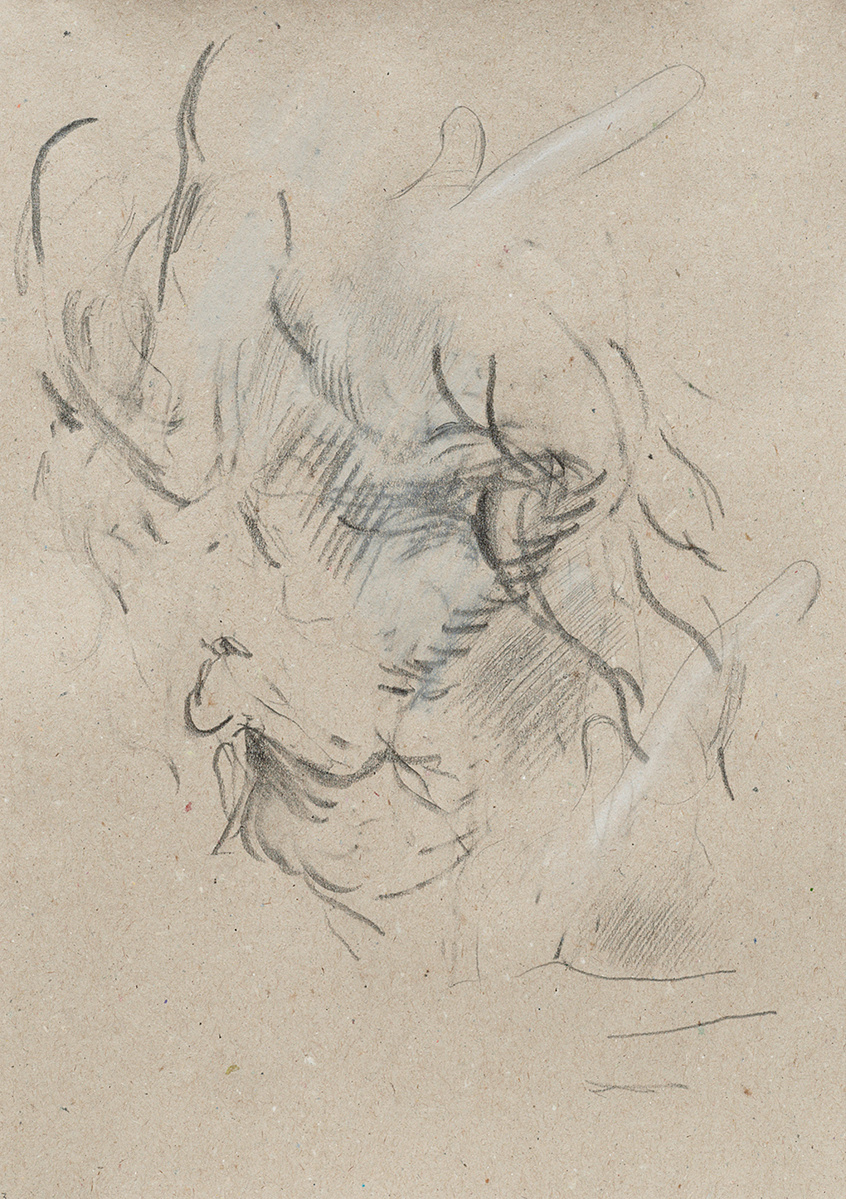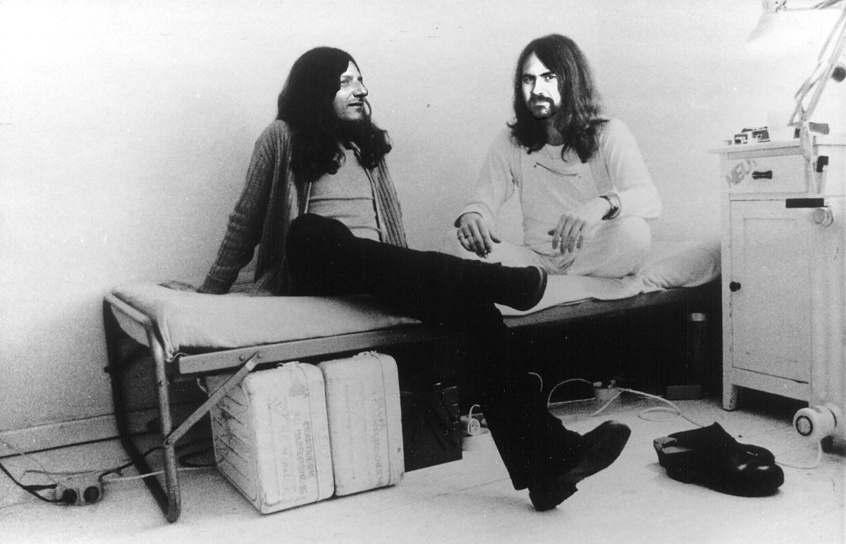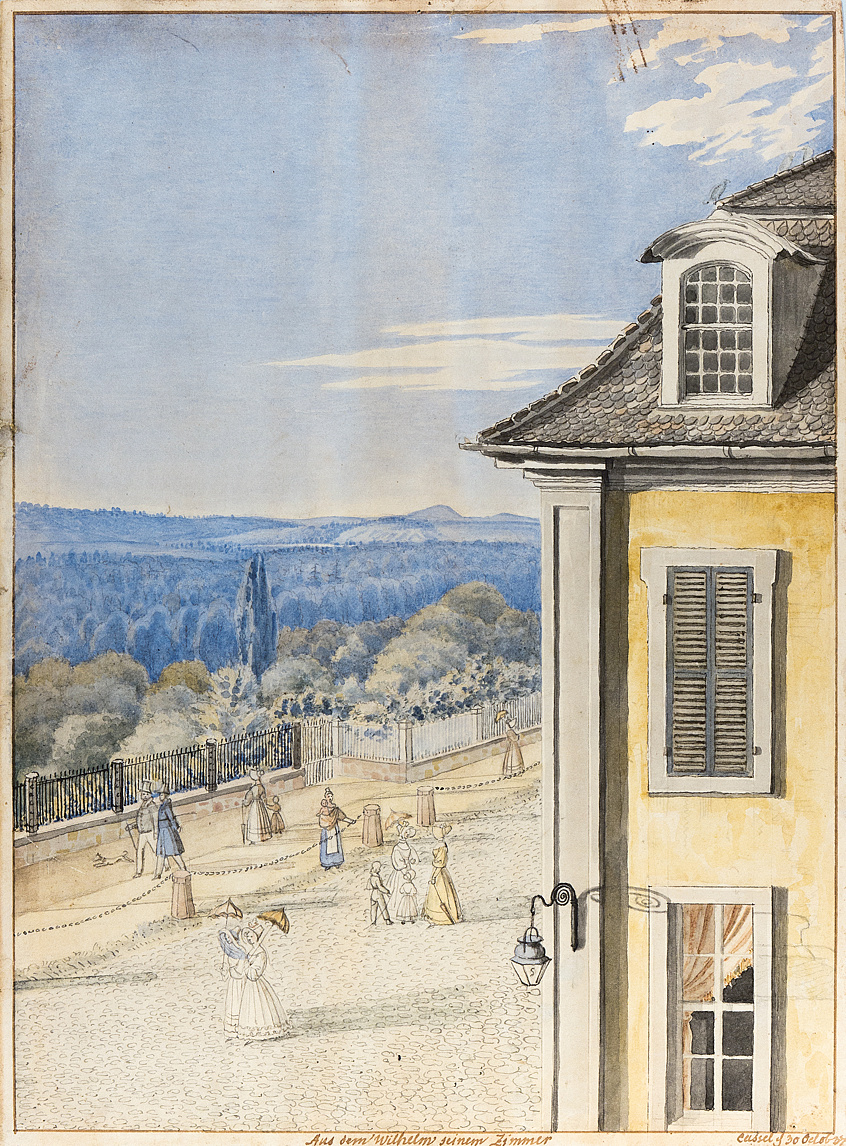
Max Liebermann, Dame im Kahn (ca. 1911), detail, black chalk and pencil on paper, 28.9 × 44.5 cm, Kupferstichkabinett der Staatlichen Museen zu Berlin, Photo: Dietmar Katz (left); David Schutter, SK L 402–429, 432–439 (2017), detail, black chalk and pencil on chamois colored paper, 42 × 30 cm, Photo: Jim Prinz (right)
Dieter Roelstraete: The story of the Gurlitt Estate has been an ongoing curatorial concern of documenta 14’s. For some time now you have sailed on an independent course of artistic research into the matter of the Gurlitt Estate or, as it is often referred to in Germany, the “Schwabinger Kunstfund,” and this has led to one of a handful of new projects in documenta 14 that, with varying degrees of directness, engage with the family saga of a Nazi art dealer’s private art collection. Research is an important part of what you do as an artist, but perhaps not necessarily, or not exactly, this kind of research—the kind leading one to while away hours browsing through databases of “lost art.” What drew you to this story in the first place?
David Schutter: The New York Times reported the discovery of the Gurlitt Estate in November 2013. The article arrested me in part through its skeletal facts, vague points of inquiry, and the strange images it conjured. An 80-year-old man living in a small Munich apartment with over a thousand works of art; complicated family ties to the Nazis; nearly two years passing between the report in the Times and the seizure of the works by the District Prosecutor of Augsburg (I could not help but recall the 1530 Augsburg Confession in what seemed, to me, a revelatory link to past war crimes and new questions of German reformation). I was particularly struck by the obvious mania of living with art to this degree. A Matisse under the bed, a Courbet in the cupboard. The Lost Art Internet Database provides a full inventory of the works from the Munich apartment, as well as the contents of Cornelius Gurlitt’s other trove in Salzburg, and the late find of a Claude Monet in a suitcase at a third site. I searched the database to see some sense—for lack of a better word—in the troves and was left without much semblance of any. It is true that I do not usually begin my work this way, by encountering subjects in a newspaper and then a database. I usually fall upon them rather peripatetically through travel, chance, or extended unfolding projects that have real contact sites with the museum or an archive. However, this particular example of living with art as a life condition, as a life sentence, stayed with me.
DR: Could you talk a little more about the psychology of collecting, that is—if you can call this “collecting” at all… That’s certainly a reservation that has come up over the course of documenta 14’s own engagement with this affair; for the most part, we have tried to avoid calling it the “Gurlitt Collection,” preferring instead that strange notion of the “Kunstfund”: the “art find.” I’m asking this in part because I’m interested to find out how you, as an artist, live with art, and to what extent the way in which Cornelius Gurlitt was found to have “lived with art” is either a source of recognition or disbelief for an artist like yourself, who works first and foremost in a continuous dialogue with past masters. I even discern a note of sympathy in your diagnosis of the Gurlitt case…
DS: Like you, I wouldn’t call what was found in Gurlitt’s apartment a collection. Rather, the works there were inherited from his father, Hildebrand Gurlitt, one of four art dealers that the Nazis employed to deal in art for the benefit of their coffers. So, what was found in the Munich apartment was mostly the remainder of Hildebrand’s project. The artworks discovered were not assembled under any overarching aesthetic principle, nor linked by common subjects or historical themes, nor were they acquired with a collector’s judgement for certain criteria; they simply remained after Hildebrand’s campaign to build up a valuable cache. Cornelius and the cache ultimately ended up in the same apartment. That’s living with art as a condition. He was the keeper of the art that kept him. In that regard, I do recognize a connection in some vestigial way. A bounded freedom, or perhaps more to the point, freedom by bond. I live with pre-modern works of art through long periods of archival research or museum study, and then again through equally long periods of time re-performing these historical works in the studio, using the same materials under the same dimensions as their sources. There have been years in which I study one painting, and make one painting in return. However, insofar as the Gurlitt case may cross my practice in certain ways, I want to be careful not to fashion a romantic vignette from these connections. It is an extremely complicated case. With that in mind I can say, with regard to the contents of the trove, that over time I came to see certain segments of it with great interest.
DR: Could you tell us a little more about what you came to focus on? Which segment, so to speak? (I like the allusion here of a cut, incision, or section.) And how you have gone about the business of translating your research into a work of art?
DS: An incision, or a cut, that vertically cores through an archive can reveal the more phenomenal or latent content of its collected material. I cut through the Gurlitt trove and excised a section that was rich with drawings by Max Liebermann (1847–1935). As you know, the first work from the Gurlitt trove determined to be Beutekunst (looted art) and undergo restitution was Max Liebermann’s 1901 painting Two Riders on the Beach. In him, I saw the perfect material core. The Liebermann drawings in the trove are sketches of daily life in middle-class Germany. Dashed down on small scraps of paper, one finds scenes of street life, taverns, theater performances, boating excursions, and countryside retreats. I came to see these normative tableaus as a perversion of sorts within the Gurlitt context. I studied all the drawings in this Liebermann excision closely, and familiarized myself with their images and techniques. I also traveled to Berlin a few times on research trips from the fall through the winter of last year to see many Liebermann drawings firsthand. Studying their method of execution for some months, I grew familiar with the artist’s hand and métier. I’ve used these experiences and source materials for a group of drawings which appear in documenta 14 in Kassel. I would be interested to hear your thoughts—as a curator—about how Liebermann, a historical figure caught in Germany’s nineteenth, twentieth, and now twenty-first centuries, plays a bit of a specter to some central themes of the whole documenta 14 project. Can you speak a little to that?
DR: Well, Liebermann is of course a pretty singular, emblematic figure—the leading representative of Impressionism in Germany, the embodiment of the social success story of German-Jewish assimilationism whose tenure as the president of the Academy of Arts in Berlin was cut short by the rise of Hitler (he resigned in 1933, and died aged 87 in 1935), and whose paintings regularly passed through Hildebrand Gurlitt’s eager, promiscuous hands. At an early stage, we were particularly interested in a painting of Liebermann’s titled Two Riders on the Beach, a variation on a theme that is also present in the permanent collection of the Neue Galerie in Kassel, where your work will be on view; it was something of a surprise to discover that Liebermann painted more than forty of such “riders on the beach” during his long life, and there is an element of mass production here, if you like, that I think is interesting. But in the end, of course, Liebermann always returns us to the drama of twentieth-century Germany, and one aspect of his persona that we are drawn to in particular concerns the eminently bourgeois charge of his work: the gestalt of German Bildungsbürgertum from which documenta was partly founded, ten years after the end of WWII.
DS: It was precisely that charge in Liebermann’s work the became a source of prolonged contemplation for me, and ultimately a point of departure to consider where we are now. As you say, the stage of reconstruction and open dialogue that ushered in the initial documenta in 1955 was the child of German Bildungsbürgertum. That, in a way, sums up why I thought the cut from the Gurlitt trove, of back to back Liebermann drawings, was a kind of natural history of profound interstices between the past three centuries. Or perhaps I should say, that is why I found Liebermann to be representative of a Germany that is presently, and historically has been, in the middle. Even materially, in his choice of drawing tools—pencil and black chalk on buff, ivory, or (as the customs agents put it in their strange description of his drawings) “chamois colored paper,” Liebermann portrays a taste for academic middle-class materials that bear a cautious reverie of both modernity and the acceptable conventions of bygone eras. His sensitive, quick, and spare drawings on toned paper evince a dedication to the middle ground, where life and form can emerge and recede. I began to think about the mind of an artist accepting the terms of that position. In a sense, Liebermann sees things come and go.
DR: I’m struck that you made a point of remembering the words used by the customs agents to describe Liebermann’s choice of paper… Must be the detective in you! But then again so much in your work revolves around patience, the silent art of observation, and a most meticulous attention to detail—especially of the seemingly “superficial” kind. And I am bracketing my use of the notion of surface for obvious reasons here. In any case, you’re not just using any old paper for these drawings, correct?
DS: Indeed, not any old paper, but rather a singularly old paper. When I studied Liebermann’s drawings in the Kupferstichkabinett in Berlin, I saw some paper very close in color, tone, and finish to the chamois colored paper of the Gurlitt Liebermann drawings. The works in Berlin were mostly sketchbook scale, akin to the size of the Gurlitt works. I then located one of Liebermann’s sketchbooks completely intact and from the quality of the drawing marks and the character of the paper therein, I began to think that this sketchbook was composed of the very chamois-colored paper named in the customs inventory. Perhaps Gurlitt had disassembled drawings from an album, or broke apart a sketchbook. There is no way of knowing this at present, but I came to think of all the chamois-colored papers from the trove as sharing a material origin. Certainly, by their themes of daily life in the Bildungsbürgertum, they are drawn together. I analyzed the paper with a master papermaker, Gangolf Ulbricht. He explained to me the material history and methods of the paper’s production and together we chose samples from nineteenth-century paper recipe books to discover specifically how and from what Liebermann’s sketch paper was made. Using nineteenth-century cellulose from his atelier, Ulbricht recreated—or rather reanimated—this cellulose into a paper that is in every material way a nineteenth-century paper. My drawings in documenta 14 are all on this very special ground, and I made them with Liebermann’s black chalk and pencil. This is what I consider the value of surface information: that it can accrue into a forensic investigation, and give over to the more phenomenal aspects of seeing.
DR: It is fascinating to see the traces of a more innocent nineteenth-century vision of art appear in the documenta 14 exhibition—by way of a literal paper trail. Very Benjaminian. I look forward to seeing your work at the Neue Galerie in close proximity to, and dialogue with, not just Max Liebermann and the various shadows cast by the Gurlitt Estate, but also the other artists in documenta 14 who have sunk their teeth into the story of the Gurlitt family. Thank you David!



